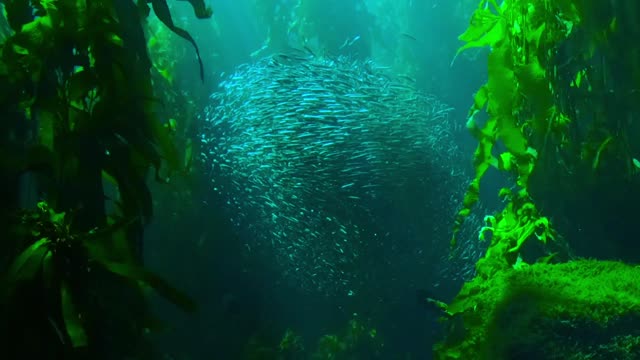Premium Only Content

Marine life 2021 / What is in the depths of the ocean
Don't forget to enter our store that specializes in designing cool clothes
link : https://cutt.ly/4b3MUuh
Here is a link to a page with some animal products I recommend you buy that will make your pet happier and more energetic (this is not marketing)
link : https://cutt.ly/cb38Nvi
Marine life
Marine life, or sea life or ocean life, is the plants, animals and other organisms that live in the salt water of the sea or ocean, or the brackish water of coastal estuaries. At a fundamental level, marine life helps determine the very nature of our planet. Marine organisms produce much of the oxygen we breathe. Shorelines are in part shaped and protected by marine life, and some marine organisms even help create new land. Most life forms evolved initially in marine habitats. Oceans provide about 99 percent of the living space on the planet. The earliest vertebrates appeared in the form of fish, which live exclusively in water. Some of these evolved into amphibians which spend portions of their lives in water and portions on land. Other fish evolved into land mammals and subsequently returned to the ocean as seals, dolphins or whales. Plant forms such as kelp and algae grow in the water and are the basis for some underwater ecosystems. Plankton, and particularly phytoplankton, are key primary producers forming the general foundation of the ocean food chain. Marine vertebrates must obtain oxygen to survive, and they do so in various ways. Fish have gills instead of lungs, although some species of fish, such as the lungfish, have both. Marine mammals, such as dolphins, whales, otters, and seals need to surface periodically to breathe air. Some amphibians are able to absorb oxygen through their skin. Invertebrates exhibit a wide range of modifications to survive in poorly oxygenated waters including breathing tubes (see insect and mollusc siphons) and gills (Carcinus). However, as invertebrate life evolved in an aquatic habitat most have little or no specialisation for respiration in water. Altogether there are 230,000 documented marine species, including about 20,000 species of fish, and it has been estimated that nearly two million marine species are yet to be documented. Marine species range in size from the microscopic, including plankton and phytoplankton which can be as small as 0.02 micrometres, to huge cetaceans (whales, dolphins and porpoises) which in the case of the blue whale reach up to 33 metres (109 feet) in length, being the largest known animal.
-
 10:32
10:32
Nikko Ortiz
1 day agoFunniest Fails Of The Month
53.2K7 -
 1:27:34
1:27:34
TruthStream with Joe and Scott
4 days agoArchitect Richard Gage: 911 truths and more #482
27.8K7 -
 LIVE
LIVE
Lofi Girl
2 years agoSynthwave Radio 🌌 - beats to chill/game to
135 watching -
 56:48
56:48
The HotSeat
13 hours agoI'm NOT Sorry! Guns Aren’t the Problem—Godless Culture Is
32.3K30 -
 9:43
9:43
The Pascal Show
15 hours ago $0.52 earnedWHOA! Annunciation School Sh**ter Identified... Heartbreaking & Insane
4.98K2 -
 22:42
22:42
Liberty Hangout
9 hours agoCollege Democrats Say Gangs Are GOOD!
78.3K68 -
 2:14:50
2:14:50
Badlands Media
15 hours agoBadlands Media Fantasy Football Live Draft
46.4K1 -
 2:12:29
2:12:29
Inverted World Live
8 hours agoWe Are Time Travelers | Ep. 100
88.7K13 -
 2:57:09
2:57:09
TimcastIRL
9 hours agoCorporate Press Refuses To Mention Minneapolis Shooter Was Trans | Timcast IRL
196K106 -
 5:26:57
5:26:57
Akademiks
8 hours agoWar in RAT-LANTA. Young Thug vs Gunna vs Ralo vs YSL MONDO. Who Will Le Bebe Pick. FINAL CRASHOUT!
62.2K6